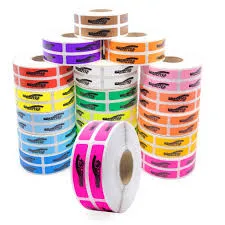The Importance of Sticker Printing for Food Packaging
In today's fast-paced and competitive market, food packaging plays a crucial role in attracting consumers and communicating essential information about the product. Among the various elements of food packaging, sticker printing has emerged as a vital tool for branding, marketing, and information dissemination. This article explores the significance of sticker printing in food packaging and how it enhances the overall consumer experience.
Branding and Identity
Sticker printing allows food manufacturers to establish a strong brand identity. Custom stickers can be used to showcase a brand’s logo, colors, and design elements that resonate with the target audience. For example, an organic snack company might opt for earthy colors and eco-friendly materials that reflect its commitment to sustainability. A well-designed sticker not only helps in creating brand recognition but also differentiates the product from competitors. In an age where consumers are bombarded with choices, a striking sticker can catch the eye and entice them to choose one product over another.
Information and Transparency
Regulations surrounding food labeling are stringent, and transparency is paramount for building trust with consumers. Stickers on food packaging provide an effective medium for communicating vital information such as nutritional facts, ingredients, expiration dates, and allergen warnings. By using high-quality printing techniques, manufacturers can ensure that this information is clearly visible and easily readable. Moreover, informative stickers can aid consumers in making informed choices about their diets, promoting transparency in an industry that can sometimes be opaque.
Versatility and Customization
sticker printing for food packaging

Sticker printing offers a high degree of versatility and customization that is particularly beneficial for food packaging. Different shapes, sizes, and finishes can be used to create unique looks that align with seasonal promotions or special editions. For instance, a beverage company might utilize holographic stickers for a limited-edition drink to create a sense of urgency and excitement. The ability to customize stickers also allows businesses to test different designs and messages to see what resonates best with their audience, ultimately leading to improved sales.
Cost-Effective Marketing
Sticker printing is a cost-effective marketing strategy for food companies of all sizes. Unlike other advertising methods that may require hefty budgets, stickers provide an affordable way to promote products without sacrificing quality. They can be printed in bulk, ensuring that businesses can efficiently manage their inventory while still having the flexibility to make adjustments as needed. Incorporating promotional stickers into food packaging can generate interest and encourage consumers to try new products, thus driving sales.
Eco-Friendly Options
As sustainability becomes increasingly important to consumers, many food brands are seeking eco-friendly packaging solutions. Sticker printing has made significant strides in this area, with options such as biodegradable and compostable stickers now widely available. By using sustainable materials, food brands not only appeal to environmentally conscious consumers but also contribute positively to global sustainability efforts. This commitment to eco-friendliness can enhance brand loyalty, as consumers are more likely to support businesses that reflect their values.
Conclusion
In conclusion, sticker printing is an essential component of food packaging that serves multiple purposes—from branding and marketing to conveying important information and promoting sustainability. As the food industry continues to evolve, the role of stickers in packaging will likely grow even more prominent. Companies that leverage high-quality, custom sticker printing can enhance their product appeal, foster consumer trust, and ultimately drive sales. In a world where first impressions count, the right sticker can make all the difference in the competitive landscape of food packaging.



